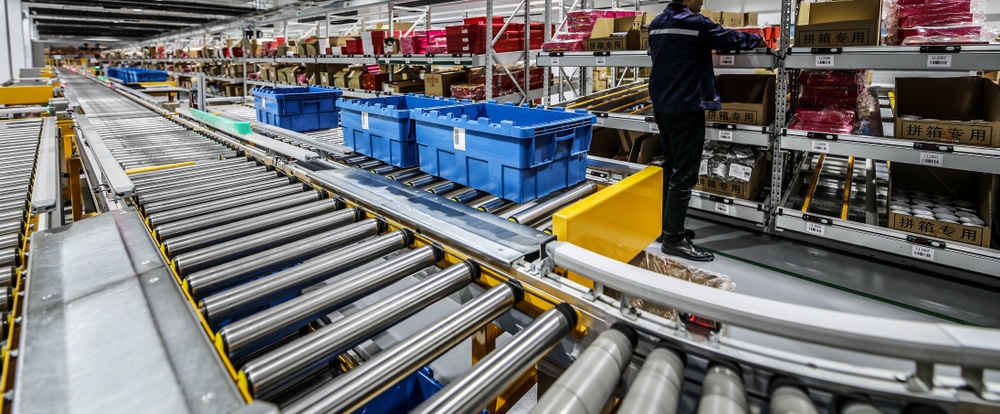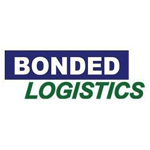Guide to Warehouse SOPs: Standard Operating Procedures
A warehousing SOP standard operating procedure is key to efficient, safe, and compliant warehouse operations. This article explains what makes SOPs effective, the steps to create them, and best practices for implementation.
Key Takeaways
- Warehouse SOPs ensure tasks are performed consistently, enhancing efficiency, safety, and compliance in operations.
- Key components of effective SOPs include detailed documentation, clear role assignments, and performance metrics to measure effectiveness.
- Utilizing technology like a WMS and barcode scanning maximizes operational efficiency and accuracy in warehouse management.
Understanding Warehouse SOPs: The Backbone of Efficient Operations
Warehouse Standard Operating Procedures (SOPs) provide detailed instructions for each step of warehouse processes. They help ensure that tasks are executed correctly and consistently. These SOPs are crucial for maintaining efficiency, safety, and compliance in warehouse operations. Implementing SOPs minimizes errors and enhances efficiency, resulting in smoother and more reliable operations.
Effective standard operating procedures standardize procedures across all operations, facilitating scaling and ensuring consistency. They eliminate guesswork among staff, ensuring uniformity in task execution, which is vital for critical processes such as inventory receiving, storage, pick-up, packing, and shipping.
Moreover, SOPs provide control and improvement measures that enhance operational efficiency and offer opportunities for continuous improvement.
Key Components of Effective Warehouse SOPs
Effective warehouse SOPs focus on three key components: detailed process documentation, role assignments and responsibilities, and performance metrics and KPIs. Each of these elements plays a critical role in ensuring that warehouse operations run smoothly and efficiently.
Detailed process documentation ensures that every task is performed correctly and consistently, reducing ambiguity and errors. Clearly defined roles and responsibilities enhance accountability and streamline workflows.
Performance metrics and KPIs allow you to measure the effectiveness of your SOPs and identify areas for improvement.
Detailed Process Documentation
Documenting each warehouse process in detail helps eliminate ambiguity and ensures uniform task execution by all employees. This thorough documentation is vital for maintaining quality processes and streamlining both simple and complex tasks.
Clear, written procedures ensure that all employees follow the same steps, resulting in consistent and reliable operations.
Role Assignments and Responsibilities
Clearly defined roles and responsibilities within SOPs contribute to better accountability and operational flow within the warehouse. Designating specific tasks to specific roles streamlines workflows, fosters accountability, and improves operational efficiency.
This clarity helps ensure that processes are followed consistently and efficiently, reducing the chances of errors and enhancing overall productivity.
Performance Metrics and KPIs
Utilizing key performance indicators (KPIs) allows you to measure the effectiveness of your SOPs and identify areas needing improvement. These metrics are crucial for maintaining operational efficiency and achieving business objectives.
Regularly monitoring KPIs ensures that warehouse operations meet quality standards and customer satisfaction goals.

Creating and Implementing Warehouse SOPs
Creating and implementing effective warehouse SOPs involves several steps, starting with assessing current processes, drafting comprehensive SOPs, and training staff. Each of these steps is crucial for ensuring that your SOPs are practical, effective, and adhered to by all employees.
Assessing current processes helps identify inefficiencies and areas for improvement. Drafting comprehensive SOPs involves defining the scope and objectives, using templates, and leveraging technology to streamline documentation efforts. Finally, training and onboarding staff ensure that everyone understands and follows the SOPs, maintaining consistency and accountability in warehouse operations.
Assessing Current Processes
Evaluating existing processes is crucial for identifying inefficiencies and improvement opportunities in warehouse operations. This assessment helps uncover areas that may not be performing optimally, leading to enhanced efficiency and productivity.
Understanding the current state of operations allows for informed decisions on improvement areas.
Drafting Comprehensive SOPs
Drafting comprehensive SOPs is essential for ensuring efficiency and accuracy in warehouse operations. A solid SOP template aids in optimizing warehouse management processes by providing clear instructions, visual aids, and comprehensive details. Regular audits and adjustments based on findings are crucial for improving warehouse performance.
Utilizing customizable SOP templates can streamline documentation efforts, ensuring that SOP documents are easy to access and use. Leveraging technology can further enhance the drafting process, making it easier to enforce SOPs and improve operational efficiency.
Training and Onboarding Staff
Training employees on SOPs is essential for ensuring adherence and accountability in warehouse operations. SOPs document procedures that are crucial for regulatory compliance and maintaining safety standards. Investing in comprehensive training programs ensures that staff understand the SOPs and are proficient with the tools they need to perform their tasks efficiently.
Hands-on training combined with thorough documentation and interactive workshops is the most effective approach for onboarding staff on new SOPs. Utilizing e-learning platforms along with hands-on training and detailed documentation enhances the training experience for employees, ensuring they are well-prepared to follow the SOPs.
Warehouse Receiving SOPs: Essential Inbound Processes
Warehouse receiving SOPs are essential for managing incoming inventory accurately and efficiently. These SOPs define processes such as inspecting and verifying received goods, documenting discrepancies, and unloading, which are crucial for maintaining inventory accuracy. Efficient warehouse receiving helps to minimize errors. It also accelerates product availability and enhances overall inventory management.
Key components of receiving SOPs include pre-arrival preparations, inspection and documentation, and put-away processes. Each of these steps ensures that incoming inventory is handled correctly, reducing the risk of errors and improving overall warehouse efficiency.
Pre-Arrival Preparations
Effective pre-arrival preparations include verifying the Advance Shipping Notice (ASN) and ensuring equipment functionality. Designated zones for unloading, inspection, and storage are crucial for organizing the receiving area, reducing movement, and enhancing efficiency.
A well-planned layout in the receiving area minimizes movement, enhancing efficiency and reducing the risk of damage to goods and injuries to staff. Comprehensive process documentation is critical for defining pre-receiving tasks and proper unloading techniques. Visual management tools help staff quickly identify priorities and next steps, reducing delays and errors.
Inspection and Documentation
The Advance Shipping Notice (ASN) provides details on item types, quantities, and expected arrival times, which are crucial for verifying received goods. Standardized receiving procedures help maintain consistency and reliability, reducing variability and errors. Verification of inventory upon delivery is essential to maintain accurate records and address discrepancies promptly.
Quality control checks are included in the receiving process. This integration helps to ensure high product quality and customer satisfaction. Regular quality checks help ensure received goods meet standards and prevent defective items from entering the inventory.
Real-time alert systems notify staff of discrepancies or issues during receiving, enabling immediate resolution.
Put-Away Processes
Monitoring key performance indicators (KPIs) such as accuracy rate and put-away time is critical for identifying bottlenecks and improving warehouse efficiency. Regular reviews of KPIs help enhance overall efficiency in warehouse operations.
Final steps after the put-away process include conducting a final review, updating inventory levels, and cleaning the receiving area.

Warehouse Picking and Packing SOPs: Streamlining Outbound Operations
SOPs for outbound warehouse operations are essential for achieving robust operational planning and ensuring efficient order fulfillment. These simple warehouse sop solutions include processes for order picking, packing, and conducting quality checks before dispatch, which are crucial for meeting customer expectations and maintaining operational efficiency. Implementing effective warehouse management sops can further enhance these processes.
Enhanced storage density and proper picking and packing techniques can significantly boost order picking speed while minimizing labor expenses in outbound operations. Detailed SOPs for these processes streamline operations and reduce errors.
Order Picking Techniques
Different strategies for order picking include methods such as batch picking, zone picking, and wave picking. Batch picking involves picking multiple orders at once, which can streamline the process for high-volume items. Zone picking assigns specific areas of the warehouse for different orders, with pickers responsible for a designated zone, reducing travel time and increasing efficiency.
Wave picking organizes orders into waves based on shipping schedules, allowing for coordinated picking and reducing travel time. Selecting the appropriate order picking method can enhance efficiency, reduce errors, and improve customer satisfaction in warehouse operations.
Packing Standards and Procedures
The packing SOP includes guidelines on packaging materials, labeling, and quality checks. Standardized packing procedures ensure items are packed securely and correctly, reducing the risk of damage during transit.
These procedures also include labeling requirements to ensure that packages are easily identifiable and traceable, which is crucial for efficient warehouse dispatch and customer satisfaction.
Quality Checks Before Dispatch
Conducting thorough quality checks before dispatch ensures that all orders meet accuracy and quality standards. This step involves verifying the accuracy and integrity of packed orders prior to their shipment, which helps in minimizing errors and ensuring that customers receive the correct products in good condition.
Quality assurance processes at this stage are essential for maintaining high service quality and customer satisfaction.
Inventory Management SOPs: Maintaining Optimal Stock Levels
Effective inventory management SOPs are crucial for maintaining optimal stock levels and ensuring that warehouse operations run smoothly. These SOPs outline procedures for inventory organization, storage practices, and maintaining minimum stock levels. Accurate data entry and regular stock audits are essential components of these SOPs, as they help in maintaining accurate inventory records and enhancing operational responsiveness.
By implementing customizable inventory management software, warehouses can tailor their SOPs to fit specific needs and improve overall inventory control. Maintaining accurate inventory records is vital for ensuring product availability and preventing stockouts, which can lead to lost sales and customer dissatisfaction.
Regular Cycle Counts
Cycle counting is a systematic approach that allows companies to verify their inventory levels without halting operations for a complete physical count. Regular cycle counts help identify discrepancies in inventory records, thereby improving overall inventory accuracy and efficiency.
Regularly counting specific products or areas enhances stock level accuracy and maintains optimal inventory management practices.
Managing Reorder Points
Establishing reorder points is crucial for preventing stockouts and ensuring that inventory is replenished timely. Reorder points help maintain a balance between inventory availability and storage costs, avoiding lost sales due to stockouts.
Timely replenishment of inventory, guided by accurate reorder points, ensures smooth operations and customer satisfaction.
Handling Discrepancies
Implementing clear procedures for addressing inventory discrepancies can minimize their impact on operations. Tracking key performance indicators (KPIs) like accuracy rate and cycle time is essential to evaluate the effectiveness of put-away processes and ensure data accuracy.
Real-time visibility supports better decision-making and enhances process efficiency.

Continuous Improvement in Warehouse Operations
Continuous improvement in warehouse operations is essential for adapting to changing business needs and enhancing overall efficiency. Encouraging collaboration among employees can lead to significant insights for operational enhancements and foster a culture of continuous improvement. Utilizing real-time data analytics allows warehouse managers to instantly track performance metrics and identify operational trends.
Leveraging real-time analytics allows warehouses to make informed decisions, continually optimizing operational efficiency. Regular audits, gathering employee feedback, and adapting to technological advances are key strategies for maintaining continuous improvement in warehouse operations.
Conducting Regular Audits
Regular audits of performance metrics help maintain high standards of operational efficiency and accuracy. Utilizing performance metrics in warehouse SOPs allows for the assessment of operational effectiveness and identification of improvement areas. Routine cycle counts help ensure ongoing accuracy of stock levels and assist in identifying discrepancies early.
Establishing open communication channels among staff promotes a culture of continuous improvement.
Gathering Employee Feedback
Creating a culture of continuous improvement in warehouse operations allows for ongoing enhancements and increased efficiency. Implementing regular feedback mechanisms encourages employees to share insights and suggestions for improving processes.
Regularly incorporating feedback from warehouse staff helps the organization adapt to changes in the industry and employee needs. These elements collectively foster a proactive improvement culture that leverages employee feedback to enhance warehouse operations.
Adapting to Technological Advances
The need for speed and precision has become prevalent in contemporary business, affecting warehousing. Integrating new technologies into warehouse operations is essential for staying competitive. Adapting to technological advances can significantly enhance the efficiency and accuracy of warehouse operations, helping to maintain efficiency and operational superiority.
Leveraging Technology in Warehouse SOPs
Leveraging technology in warehouse SOPs can significantly enhance operational efficiency and accuracy. A well-integrated Warehouse Management System (WMS) provides real-time insights into all aspects of warehouse operations, from inventory tracking to order processing. RF, RFID and barcode scanning technologies play a crucial role in optimizing the warehouse receiving process, ensuring accurate inventory tracking and reducing errors.
Real-time data analytics further support accurate and timely data collection, enabling warehouses to monitor performance metrics and drive ongoing improvements. Incorporating advanced technologies into warehouse operations streamlines processes, enhances efficiency, and maintains market competitiveness.
Warehouse Management Systems (WMS)
Warehouse Management Systems (WMS) enhance efficiency in the receiving process by utilizing technologies such as barcode scanners, RF and RFID technology. The key benefits of using a WMS include speeding up processes and allowing staff to focus on more complex tasks instead of repetitive ones. Automation can handle repetitive tasks like data entry, labeling, and sorting in the warehouse receiving process.
A well-integrated WMS provides real-time visibility into warehouse operations, enhancing control and insight into product movement. Real-time management features in a WMS ensure accurate stock levels and locations, maintaining inventory accuracy and operational responsiveness.
Barcode, RF and RFID Scanning
RF and RFID technology enhances inventory management by allowing faster scanning without needing a line of sight. Barcode, RF and RFID technology play a crucial role in accurate inventory tracking and management, ensuring that warehouses maintain optimal stock levels. The utilization of barcode, RF and RFID technology significantly improves the accuracy of stock counts and decreases the time spent on inventory management tasks.
Implementing these technologies contributes to overall efficiency in warehouse operations, leading to better order fulfillment and reduced errors.
Real-Time Data Analytics
Real-time data analytics helps in monitoring warehouse performance by providing instant insights into operational metrics. Integrating technology into warehouse operations supports accurate and timely data collection for analytics.
Warehouse Management Systems (WMS) can automate data capture, enhancing the capabilities of real-time analytics. Utilizing barcode, RF and RFID scanning allows for precise tracking of inventory in real-time, improving data accuracy in warehouse operations management and warehouse inventory management.
The insights gained from real-time data analytics drive ongoing improvements in warehouse operations, helping to refine processes.

Cadre Technologies: Enhancing SOPs with Advanced Warehouse Solutions
When it comes to streamlining and optimizing your warehouse Standard Operating Procedures (SOPs), Cadre Technologies offers technology and expertise to maximize operational efficiency. Our warehouse management solutions ensure that SOPs are followed accurately and consistently, enhancing every aspect of your operations.
Benefits of Cadre Technologies’ WMS for SOP Integration:
- Real-time visibility: Monitor every step of your processes, from inventory receiving to picking and shipping.
- Automation: Minimize errors and boost productivity by automating routine tasks like data entry and barcode scanning.
- Seamless integration: Ensure compliance with SOPs across all operations through our comprehensive Warehouse Management System (WMS).
- Continuous improvement: Utilize real-time data analytics and KPIs to identify areas for operational enhancements.
Empower Your Team with Technology-Driven Efficiency
Cadre Technologies’ WMS empowers your team by:
- Automating repetitive tasks, allowing staff to focus on strategic activities.
- Offering intuitive interfaces that make onboarding and process adherence easier.
- Supporting ongoing SOP updates for continuous improvement and adaptability.
Ready to Take Your SOPs to the Next Level?
With Cadre Technologies, you can transform your warehouse SOPs into dynamic, efficient processes that drive continuous improvement and operational excellence. Whether you’re looking to streamline your workflows or improve compliance, Cadre’s solutions are designed to help you achieve your goals with ease.
Summary
In summary, effective warehouse SOPs are the backbone of efficient operations. By understanding the key components of SOPs, such as detailed process documentation, role assignments, and performance metrics, warehouses can ensure consistent and reliable operations. Creating and implementing comprehensive SOPs involves assessing current processes, drafting detailed SOPs, and training staff to ensure adherence and accountability.
Leveraging technology, such as a Warehouse Management Systems (WMS), barcode and RF scanning, and real-time data analytics, can further enhance SOPs and drive continuous improvement in warehouse operations. By fostering a culture of continuous improvement and adapting to technological advances, warehouses can maintain operational efficiency and stay competitive in the market.
Ready to optimize your warehouse operations? Contact us today to learn how Cadre Technologies’ solutions can help you implement and enhance your warehouse SOPs for maximum efficiency.
Frequently Asked Questions
What are Warehouse Standard Operating Procedures (SOPs)?
Warehouse Standard Operating Procedures (SOPs) are essential guidelines that detail every step of warehouse processes, ensuring tasks are done accurately and consistently. By following these procedures, you help maintain efficiency and safety in your operations.
Why is detailed process documentation important in warehouse SOPs?
Detailed process documentation is crucial in warehouse SOPs because it removes confusion and guarantees that every employee performs tasks consistently, which helps maintain quality and efficiency. In short, clear guidelines make everyone’s job easier and more effective.
How do role assignments and responsibilities enhance warehouse operations?
Clearly defined roles and responsibilities boost warehouse operations by promoting accountability and ensuring processes are followed consistently. This not only reduces errors but also enhances overall productivity.
What are the benefits of using a Warehouse Management System (WMS)?
Using a Warehouse Management System (WMS) boosts efficiency by streamlining operations with technologies like barcode scanners and RF, allowing your team to focus on more complex tasks while providing real-time visibility. This means smoother processes and better overall productivity for your warehouse.
How can real-time data analytics improve warehouse operations?
Real-time data analytics can significantly enhance warehouse operations by offering instant insights into performance and enabling informed decision-making. This results in improved efficiency and ongoing operational improvements.









